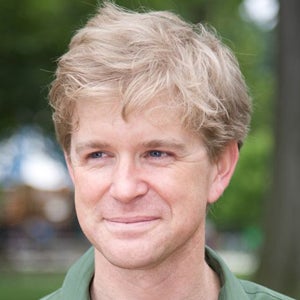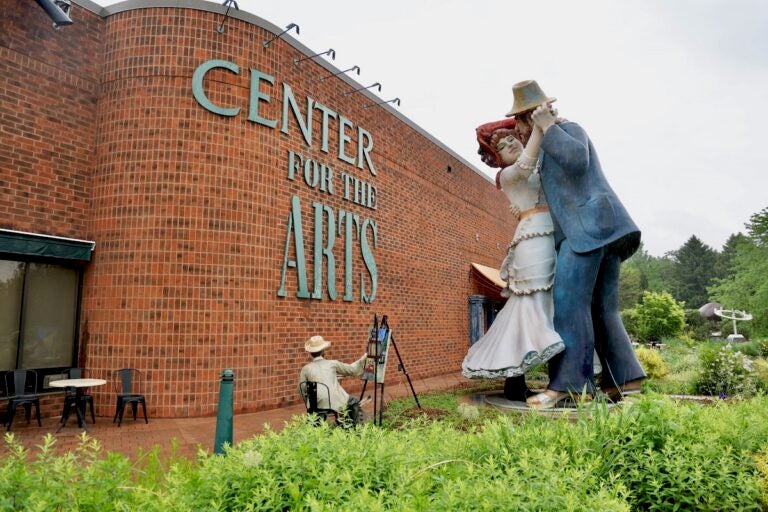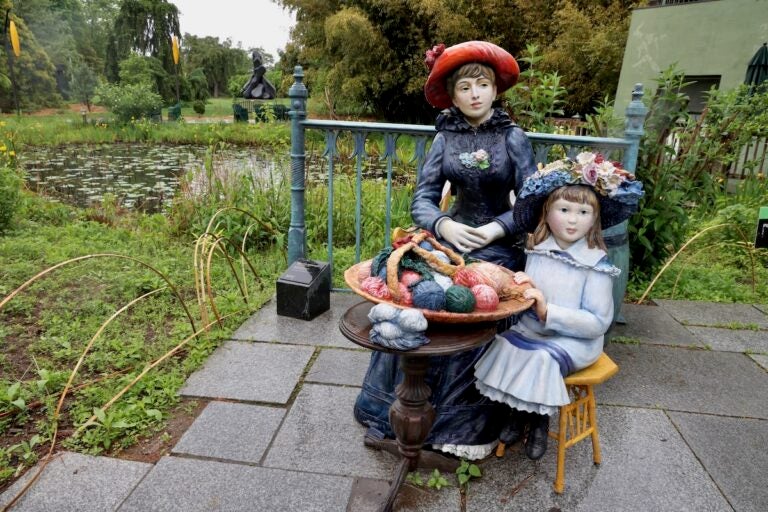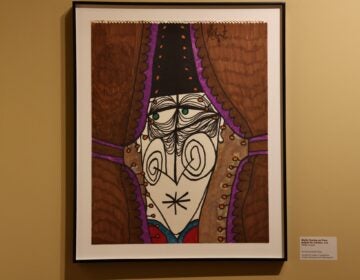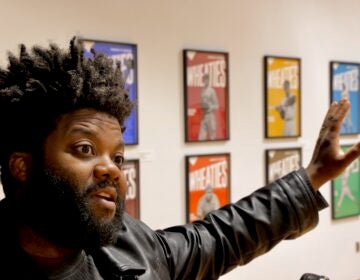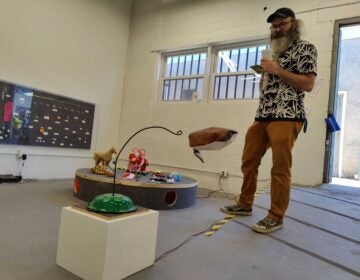Owning the means of production: New Jersey’s Grounds for Sculpture merges with the fabrication company next door
Seward Johnson established his atelier in 1974 to give artists greater involvement in the technical production of their work.
Listen 1:21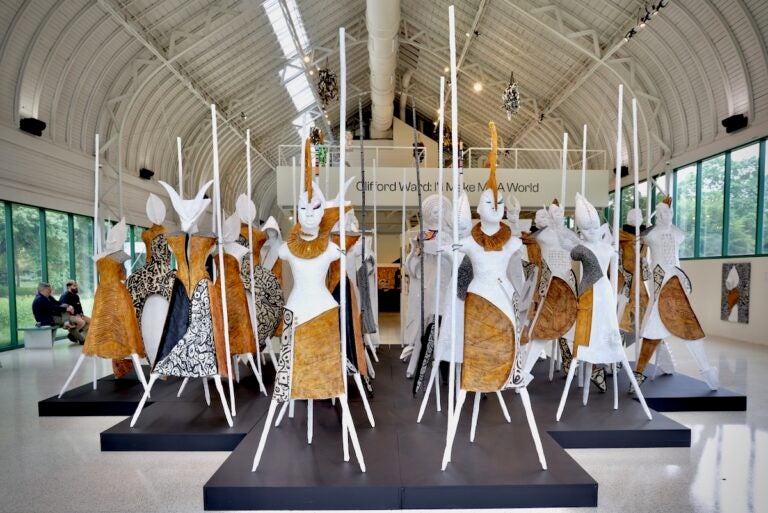
Clifford Ward's ''Animism,'' a formation of figures he describes as guardians, is the focal point of his exhibition at the Grounds for Sculpture, ''Clifford Ward: I'll Make Me a World.'' (Emma Lee/WHYY)
From Philly and the Pa. suburbs to South Jersey and Delaware, what would you like WHYY News to cover? Let us know!
Grounds for Sculpture, the 42-acre botanical and sculpture garden in Hamilton, New Jersey, has merged with the Johnson Atelier Digital, a commercial workshop that fabricates large-scale sculptural works.
Both were originally founded by artist Seward Johnson and occupy adjacent land. Of the more than 300 sculptures in the park, 40% were fabricated at the atelier.
Johnson Atelier Digital is a for-profit offshoot of the nonprofit Seward Johnson Atelier, a legacy foundation that manages and maintains Johnson’s artwork and supports outdoor sculptural work generally. The Seward Johnson Atelier foundation is not part of the merger and remains independent.
“The synergy has always been there, but we’ve had different missions and different visions,” said Grounds for Sculpture CEO Gary Garrido Schneider. “When our founder was alive, he was the unifying force.”
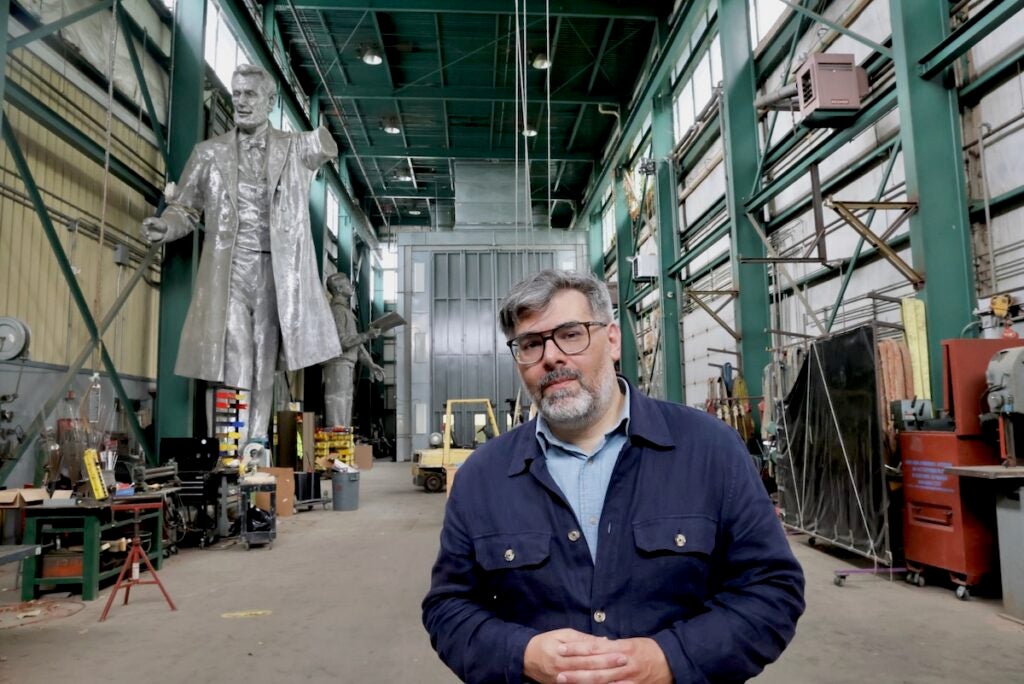
Johnson established his atelier in 1974 to give artists greater involvement in the technical production of their work. Ten years later, an abandoned plot of land behind the atelier, which operated as a fairground for almost a century prior, became available.
Johnson envisioned a rambling, lush landscape where sculptures could be appreciated by the public.
“We literally grew out the back door,” Schneider said.
Johnson died in 2020 at age 89. By then, Grounds for Sculpture was already led by Schneider and had found its footing beyond the founder’s vision and resources. Johnson was an heir to the Johnson & Johnson pharmaceuticals fortune.
“When he passed the atelier had to begin that same process that Grounds for Sculpture had done a decade ago of figuring out how you become self-sufficient,” Schneider said. “The [Johnson] family foundations asked if we would be willing to take on stewardship of that part of the legacy, the making part.”
The Johnson Atelier is housed in 60,000 square feet of space, where sculptures are designed and finished.
The staff can take a digital scan of a small prototype or maquette and use computer-assisted drafting software to scale it up to the full intended size of the sculpture. Computer Numerical Control millers can then cut high-density foam into shape. Should a piece need to be cast in metal, such as bronze, a mold is made at the atelier and shipped out to a foundry for pouring.
The atelier can fabricate missing parts of ancient artifacts, and design for industrial applications like pre-formed bridge supports and patterned sound barriers for freeways. It has a 30-foot-tall painting chamber that is able to accommodate huge pieces for industrial-grade coatings.
Notable pieces that have come out of the atelier include Iván Argote’s “Dinosaur,” a 20-foot pigeon installed on New York City High Line park; Martin Puryear’s “Big Bling,” which appeared along the banks of the Schuylkill River in 2017; Kara Walker’s “A Subtlety,” a Black woman presented as a sphinx installed in Brooklyn’s historic Domino Sugar Factory in 2014; and Adrián Villar Rojas’ 2017 “The Theater of Disappearance,” which is on the roof of the Metropolitan Museum of Art.
Most of the staff of the atelier are artists themselves. The atelier employs 120 artists who have access to onsite studios and equipment for their own projects when not working for atelier clients.
“It’s rare for a museum to have not just the artists on site but to have so much of the work physically produced on site,” Schneider said.
One of those artists is Clifford Ward, who came to the atelier as an apprentice in 1997 and never left. He is one of two dozen artists who keep a studio on site. He now has a solo exhibition in the museum building of Grounds for Sculpture, “I’ll Make Me a World.”

Ward, who embarked on his artistic career relatively late in life at age 40, said being in the atelier was transformative.
“That’s where I received all my knowledge,” he said. “We had maybe 80 to 90 artists from literally around the world, from Kenya, Czechoslovakia, China, Canada, as well as many artists from the states. It was this art colony.”
“We would work on clients’ work during the day and then we had full use of the premises in the evening,” he said. “I don’t have a formal education, but I learned so much from all the artists that have come through the Grounds. It was amazing.”
As a for-profit business, Schneider said the atelier pairs seamlessly with the nonprofit mission of Grounds for Sculpture.
“I feel that that’s an extension of our broader mission of supporting artists and engaging the public with sculpture,” he said. “For us, it’s a way of expanding the ripples of our impact as a nonprofit.”

Get daily updates from WHYY News!
WHYY is your source for fact-based, in-depth journalism and information. As a nonprofit organization, we rely on financial support from readers like you. Please give today.


